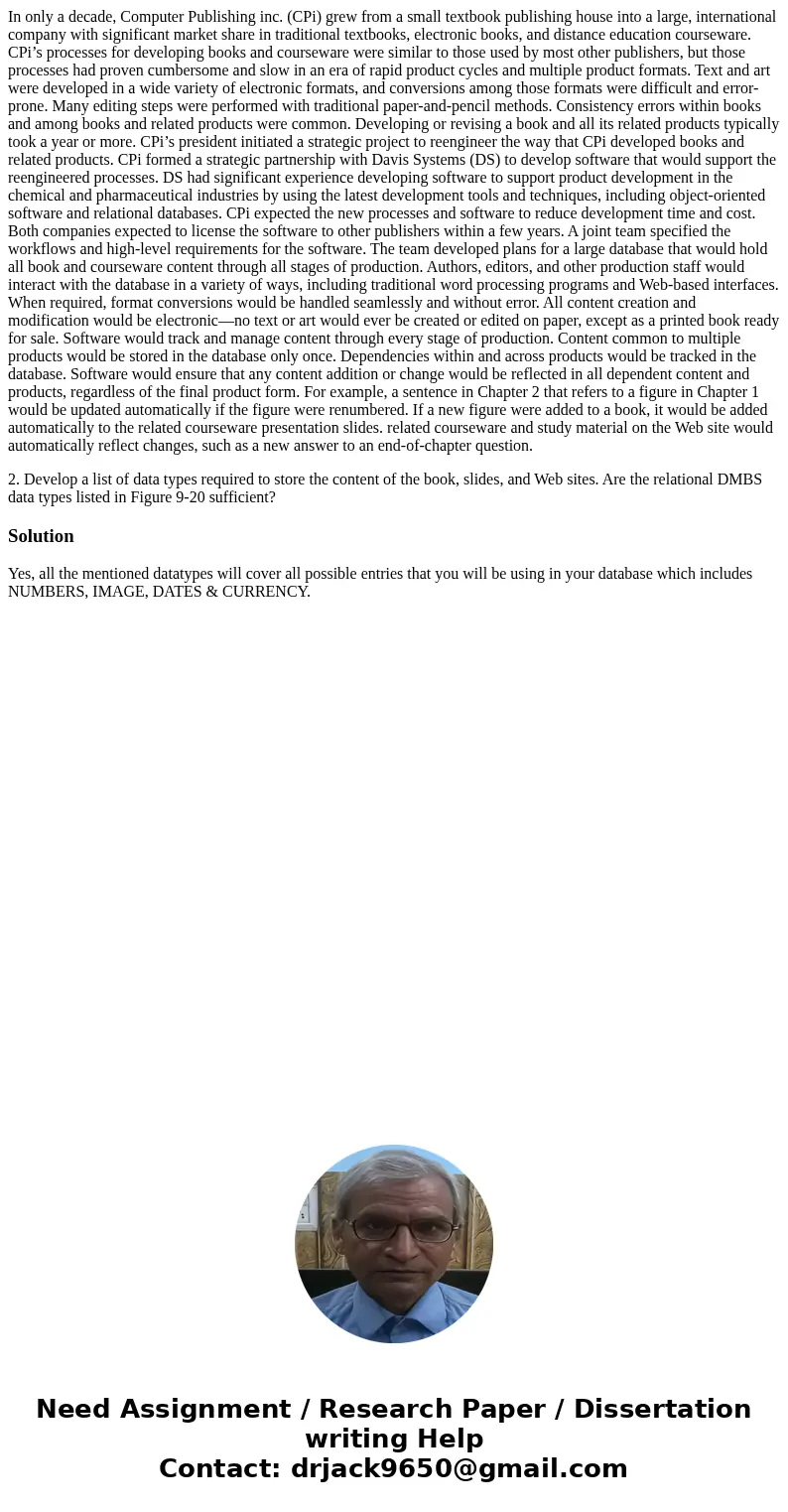In only a decade Computer Publishing inc CPi grew from a sma
In only a decade, Computer Publishing inc. (CPi) grew from a small textbook publishing house into a large, international company with significant market share in traditional textbooks, electronic books, and distance education courseware. CPi’s processes for developing books and courseware were similar to those used by most other publishers, but those processes had proven cumbersome and slow in an era of rapid product cycles and multiple product formats. Text and art were developed in a wide variety of electronic formats, and conversions among those formats were difficult and error-prone. Many editing steps were performed with traditional paper-and-pencil methods. Consistency errors within books and among books and related products were common. Developing or revising a book and all its related products typically took a year or more. CPi’s president initiated a strategic project to reengineer the way that CPi developed books and related products. CPi formed a strategic partnership with Davis Systems (DS) to develop software that would support the reengineered processes. DS had significant experience developing software to support product development in the chemical and pharmaceutical industries by using the latest development tools and techniques, including object-oriented software and relational databases. CPi expected the new processes and software to reduce development time and cost. Both companies expected to license the software to other publishers within a few years. A joint team specified the workflows and high-level requirements for the software. The team developed plans for a large database that would hold all book and courseware content through all stages of production. Authors, editors, and other production staff would interact with the database in a variety of ways, including traditional word processing programs and Web-based interfaces. When required, format conversions would be handled seamlessly and without error. All content creation and modification would be electronic—no text or art would ever be created or edited on paper, except as a printed book ready for sale. Software would track and manage content through every stage of production. Content common to multiple products would be stored in the database only once. Dependencies within and across products would be tracked in the database. Software would ensure that any content addition or change would be reflected in all dependent content and products, regardless of the final product form. For example, a sentence in Chapter 2 that refers to a figure in Chapter 1 would be updated automatically if the figure were renumbered. If a new figure were added to a book, it would be added automatically to the related courseware presentation slides. related courseware and study material on the Web site would automatically reflect changes, such as a new answer to an end-of-chapter question.
2. Develop a list of data types required to store the content of the book, slides, and Web sites. Are the relational DMBS data types listed in Figure 9-20 sufficient?
Solution
Yes, all the mentioned datatypes will cover all possible entries that you will be using in your database which includes NUMBERS, IMAGE, DATES & CURRENCY.

 Homework Sourse
Homework Sourse